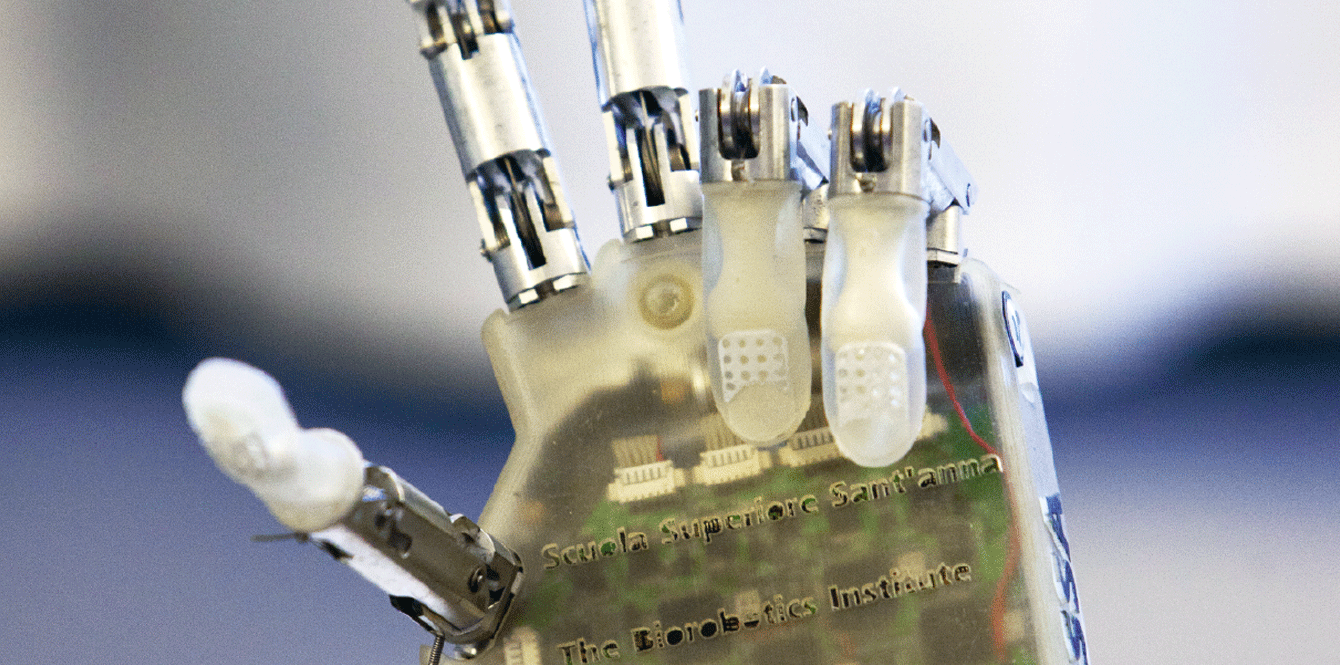
Innovation Current high-tech prosthetics and instruments date back to rudimentary but ingenious systems. Illustration in images.
The earliest versions of the clyster were in wood, then in pewter. This large cylindrical instrument could weigh up to 2 kg and came into widespread use in the 17th and 18th centuries, mainly as a cleansing enema. Its modern descendant is no other than the plastic syringe that has been in use since the 1970s. And it weighs only a few grams. “Plastic revolutionised medical instruments,” says Roxane Fuschetto, head of collections at the University Institute of History of Medicine and Public Health in Lausanne. “Objects became lighter, and some, like the syringe, are now disposable for single use. This guarantees that they remain as sterile as possible.”
Technological advances have also been used
to create artificial systems that are increasingly similar to the ones they are designed to replace.
A premature newborn is now placed in an incubator providing an environment close to that of the mother’s uterus. Amputees are soon likely
to regain a movable limb that is sensitive
and covered in skin.
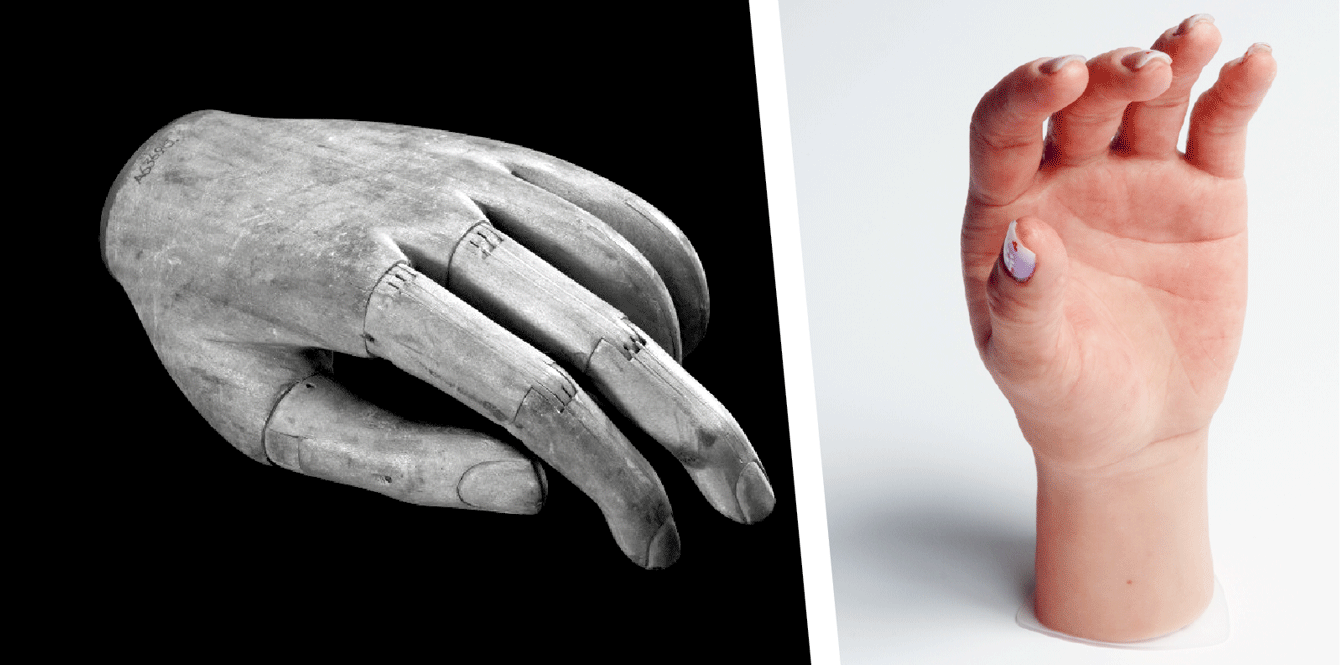
The image below depicts an artificial wooden hand dating back to World War I from Birmingham, United Kingdom. During this period, 41,000 British soldiers lost limbs on the front lines, prompting innovation in prosthetics. The thumb, index and middle fingers are visibly jointed. Spectacular progress has been made since then, both in materials and transplant methods. The UK company Touch Bionics has developed a bionic hand called i-limb digit, featuring an outer appearance meant to resemble a natural limb (opposite). The i-limb can be used to push, pull, carry lightweight objects or type on a keyboard. In March 2013, a neuroprosthetic device developed by the Swiss Federal Institute of Technology in Lausanne caused a buzz when its user was able to grip objects and feel sensations (left).
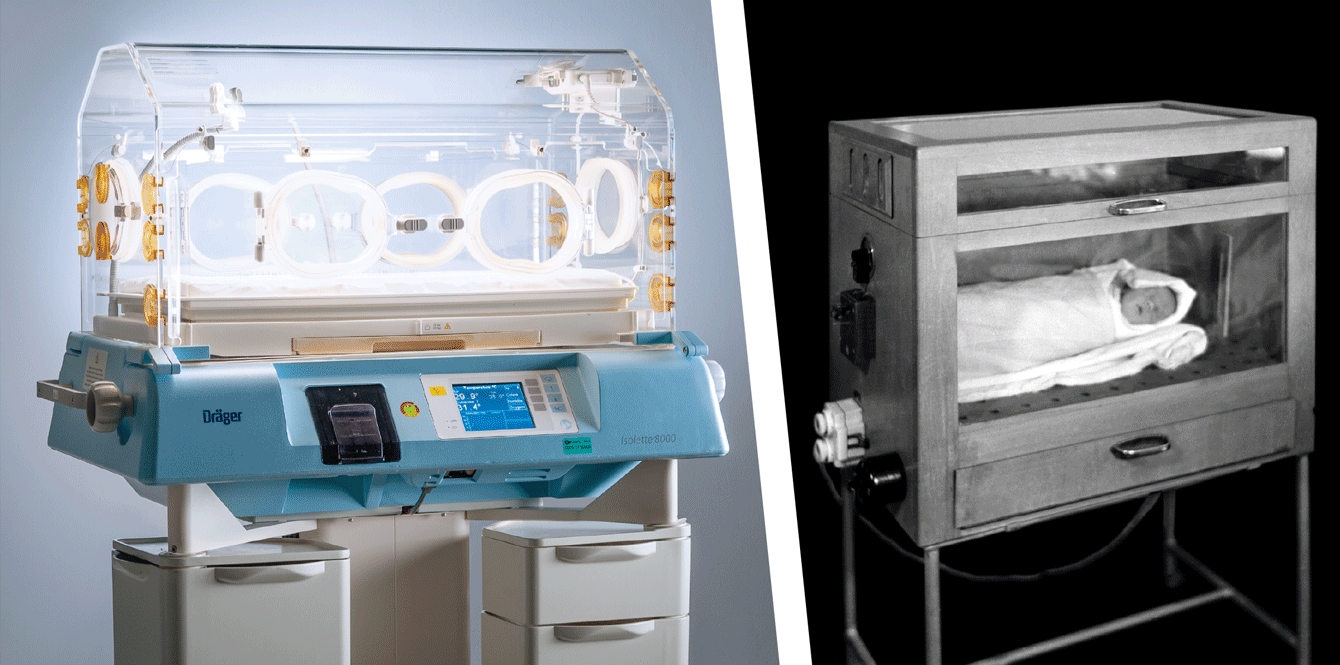
The survival rate for premature newborns has continued to rise in the past few years due to progress made in the design of incubators. These little glass cubes can now maintain the optimum temperature in an environment very close to that of the mother’s uterus. The incubator opposite has a simple electric heating system. Photographed in Prague in 1947 at the Štvanice Birth Centre, this premature infant is wrapped in warm clothing, as hypothermia is one of the causes of neonatal mortality.
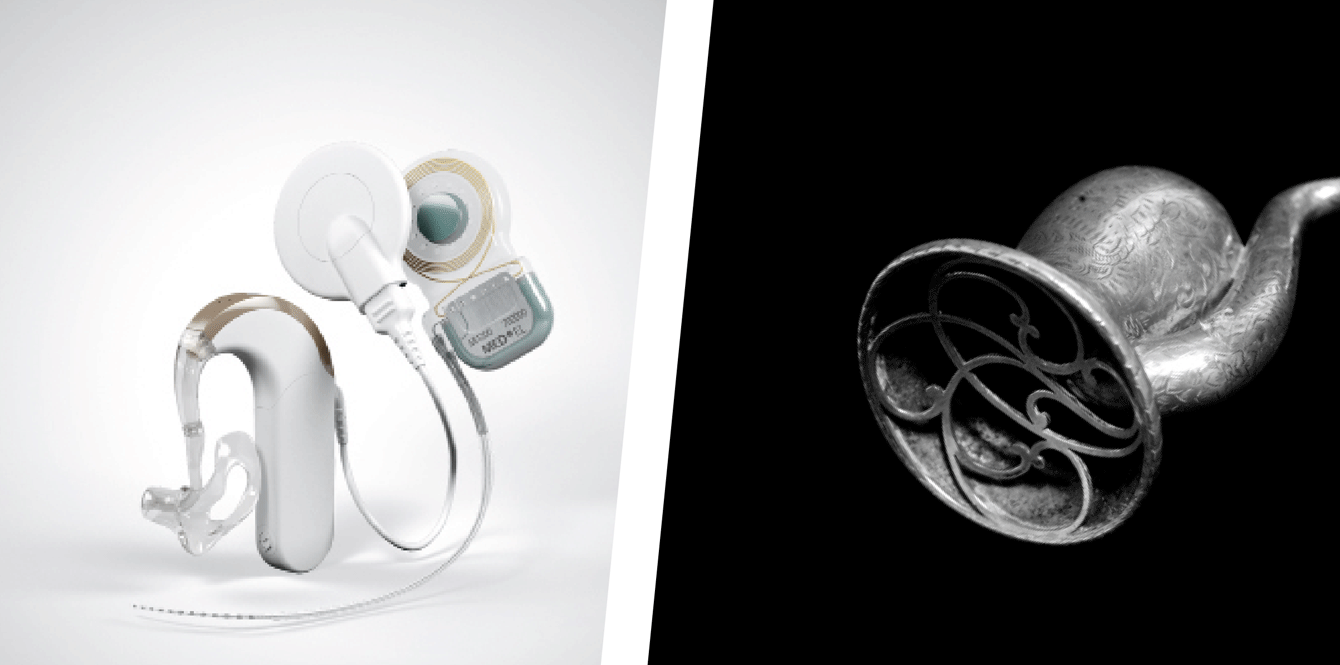
In Switzerland, nearly 100 new cochlear implants are fitted every year. These devices, like the one opposite, manufactured by the Austrian company Med-El, are used today to improve the hearing capability of the profoundly deaf or severely hard-of-hearing, by surgically implanting electrodes directly on the auditory nerve.The ancestors of hearing-aid systems are ear trumpets. These instruments were placed in the auditory canal of the hearing impaired patient. The funnel system collected and amplified sound waves to improve hearing. The model in the picture opposite was made in England around 1860 by F.C. Rein and Son, a manufacturer specialised in acoustic instruments.
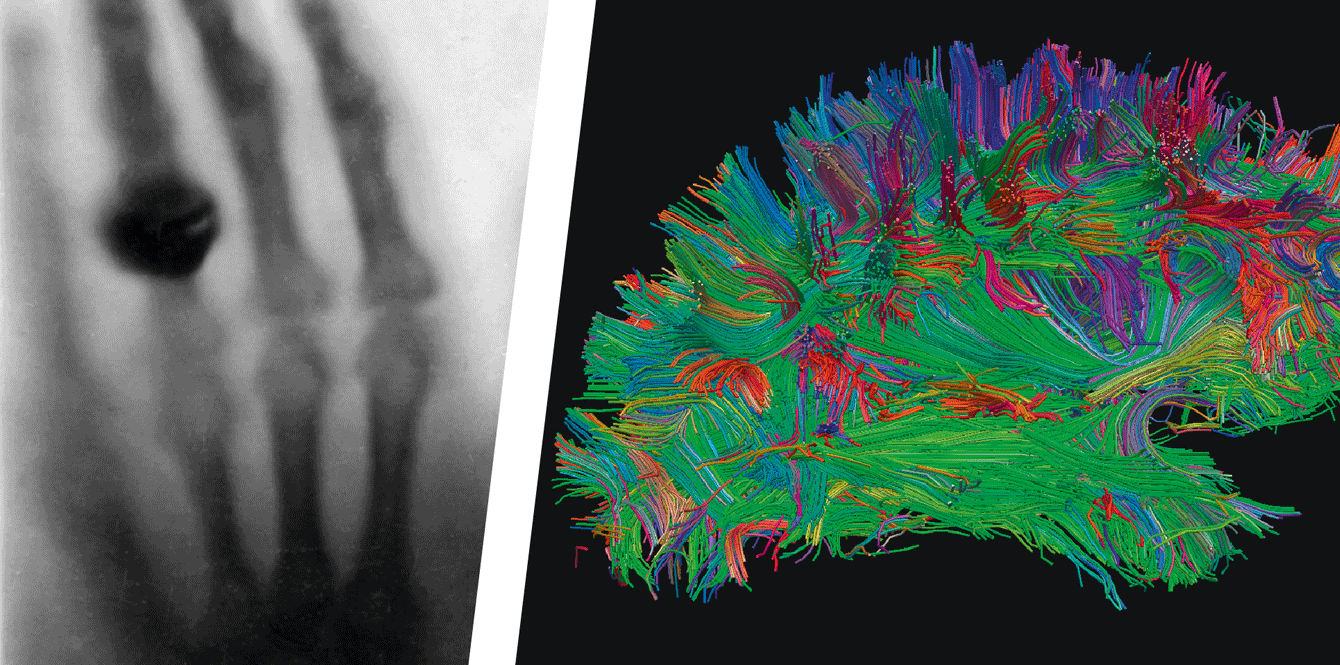
On 22 December 1895, German physicist Wilhelm Conrad Röntgen produced the first X-ray using the hand of his wife, Anna Bertha Ludwig Röntgen. The bones are visible, surrounded by shading which represents the flesh. The dark spot on the ring finger is Mrs Röntgen’s wedding ring.
One of the most common imaging techniques today uses magnetic resonance signals. An MRI shows details down to the micrometre, such as the brain’s nerve fibres (pictured above).

Trepanning, a word derived through the French trépan from the Greek trupao, meaning bore or pierce, was long used to penetrate the skull in order to operate on the brain. The instrument dating from the 19th century was photographed at the museum in the National veterinary school of Alfort, France. Today, devices like the Gamma Knife are used to treat brain lesions without having to open the skull. The Gamma Knife delivers 192 beams of cobalt radiation focused precisely on the targeted areas. This out-patient procedure does not require general anaesthesia.